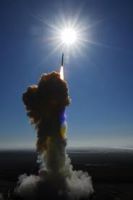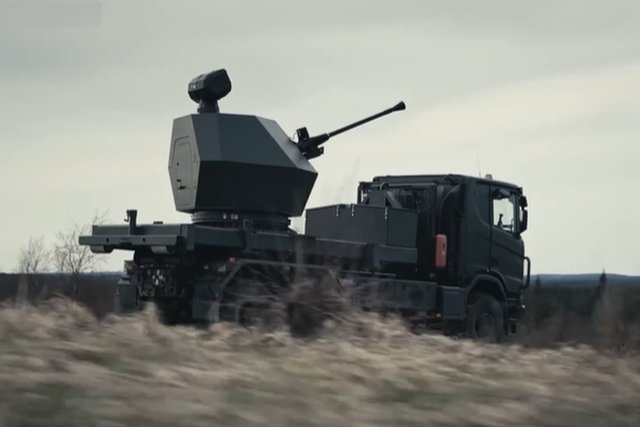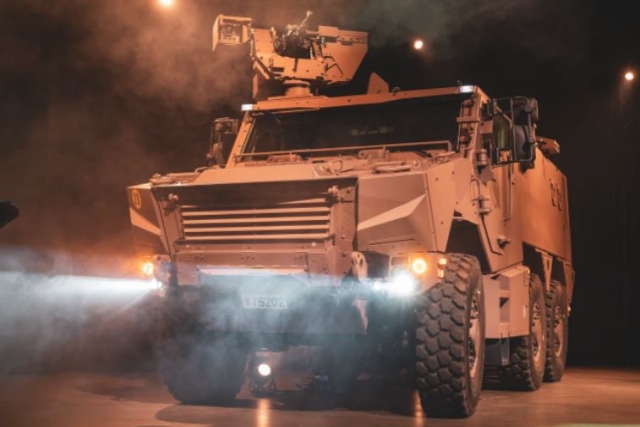MDA To Focus On Threats From Asia-Pacific, Middle East

MDA To Focus On Threats From Asia-Pacific, Middle East
In an interview with defenseworld.net, Rick Lehner, Missile Defense Agency spokesman talked about the latest threats and the MDA's plans to current capability.
DW : What are you concerns with regard to the growing ballistic missile threats around the world?
Rick Lehner: MDA will continue to focus on threats from Asia-Pacific and the Middle East as we continue to support the European Phased Adaptive Approach (EPAA) to protect our European NATO allies and deployed forces from ballistic missile attacks. The Department met its objectives for EPAA Phase 1 by deploying Aegis Ballistic Missile Defense (BMD) ships in the Mediterranean Sea, a land-based radar in Turkey, and Command, Control, Battle Management, and Communications system node at Ramstein Air Force Base in Germany in 2011. The next two EPAA phases (Phases 2 and 3) include additional Aegis BMD ships (2014-2015) and Aegis Ashore in Romania in 2015 and in Poland in 2018. Aegis Ashore will be capable of launching Standard Missile-3 (SM-3) Block IA, IB, and IIA (delivery in 2018) variants. The Ground-based Midcourse Defense (GMD) system for homeland defense against long-range ballistic missiles currently has a total of 30 interceptors located in Alaska and California. An additional 14 missiles are slated for deployment in Alaska by 2017.
DW : How does the MDA plan to tackle these threats?
Rick Lehner: Our goal in EPAA Phase 2 is to provide robust capability against Short Range Ballistic Missiles (SRBMs) and Medium Range Ballistic Missiles (MRBMs) by ensuring the system provides multiple opportunities to engage each threat missile in flight. The architecture includes the deployment of the Aegis BMD 4.0 and 5.0 weapon systems with SM-3 Block IBs at sea and at an Aegis Ashore site in Romania. The Romania site is on schedule to be available in 2015. In support of EPAA Phase 3, the SM-3 Block IIA, which we are co-developing with the Japanese government, and an upgraded version of the Aegis Weapons System are on schedule for deployment in 2018 at the Aegis Ashore sites in Poland and Romania and at sea. The upgraded Aegis Weapons System combined with the faster, longer reaching SM-3 IIA will provide capability to counter more sophisticated threats when compared to the SM-3 IA and IB and will extend coverage to NATO allies in Europe threatened by longer range ballistic missiles.
DW : You recently said that interest in ballistic missile defense capability is “worldwide,” with many challenges around the globe. Can you explain that?
Rick Lehner: We are developing fiscally sustainable advanced BMD technologies that can be integrated into the BMDS to adapt to threat changes. Our investments are focused on technology that brings upgradeable capability to the warfighter. Our advanced technology investments are determined by systems engineering, which permits us to evaluate and determine which emerging technical solutions will best address gaps in the BMDS and enhance overall BMDS capability and performance. The goals of our investments are to deploy a future BMDS architecture more capable of discriminating and intercepting the reentry vehicle with a high degree of confidence, and to allow warfighters to dramatically improve their shot doctrine.
DW : Can you tell us about your plans to improve current capability?
Rick Lehner: The FY 2015 budget balances capabilities and risks to: deter aggression, protect the interests of the United States and its allies, respond to warfighter requirements, and pursue cost- and operationally-effective capabilities against future threats. To advance the Administration’s missile defense priorities, the FY 2015 MDA’s request for BMD programs is $7.459 billion.
DW : The MDA has requested $7.4 billion in FY 2015 “to develop and deploy interceptors, sensors, and command and control, battle management and communications (C2BMC) systems that constitute the Ballistic Missile Defense System (BMDS),” can you tell us more about this?
Rick Lehner: We will also deploy a second forward-based X-band AN/TPY-2 radar in Japan, improving homeland and regional defense capabilities and increasing our global operational AN/TPY-2 radar posture, and we will build and improve the C2BMC infrastructure at fielded sites. In addition to continuing the enhancement of global BMD survivable communications and support for operations and sustainment of C2BMC at fielded sites, in FY 2015 we will integrate Overhead Persistent Infrared data into C2BMC to support cueing of BMD sensors worldwide. We will also improve sensor data integration and battle management in C2BMC to support Aegis BMD cueing and launch-on and engage-on remote capability.
DW : The budget also requests $79.5 million to begin development of a Long Range Discrimination Radar (LRDR).
Rick Lehner: The new LRDR is a mid-course tracking radar that will provide persistent sensor coverage and improve discrimination capabilities against threats to the homeland from the Pacific theater. This new radar also will give the Sea-Based X-band (SBX) radar more geographic deployment flexibility for contingency and test use.
DW : What exactly is the Discrimination Improvements for Homeland Defense (DIHD)?
Rick Lehner: We are requesting $122 million for Discrimination Improvements for Homeland Defense (DIHD). This investment will develop and field an integrated set of Element capabilities to improve BMDS engagement reliability, lethality, and discrimination. The combined effects of these investments will be a deployed BMDS architecture more capable of discriminating and killing a reentry vehicle with a high degree of confidence that will dramatically improve BMD System capability and Warfighter shot doctrine while preserving inventory.
DW : Can you elaborate on your plans to augment the agency’s ballistic missile defense ship fleet?
Rick Lehner: The Agency has no missile defense ship fleet that is a U.S. Navy function. The MDA is requesting $435 million to procure 30 Aegis SM-3 Block IB missiles in FY 2015, for a total of 332 SM-3 Block IB missiles. MDA also requests $68.9 million for advance procurement for four long-lead items associated with the FY 2016 SM-3 Block IB missile buy to ensure timely delivery to the Combatant Commander. These items include: 1) MK 104 Dual Thrust Rocket Motor, 2) MK 72 Boosters, 3) Integrated Dewar Assemblies and 4) Circuit Card assemblies.
DW : Also, can you tell us about your plans to install a new interceptor site? Are reports citing four possible locations accurate?
Rick Lehner: Congress had directed MDA to determine potentially suitable sites for an additional missile defense site in the U.S, and to conduct an environmental impact study. There are no plans to build an additional missile defense site, but an environmental study will take place at sites in Ohio, New York, Michigan and Maine. This study will take about two years to complete.
DW : How exactly does the United Arab Emirates play into the growing need for missile defense in the Middle East? Which other countries have expressed s similar interest?
Rick Lehner: The UAE purchasing the Terminal High Altitude Area Defense (THAAD) system. The U.S. has cooperative agreements with several countries, and participates in missile defense technology discussions with many countries around the world.










